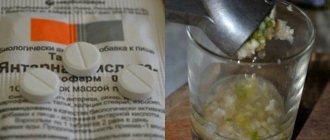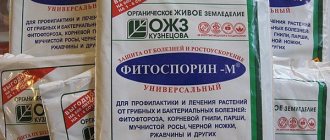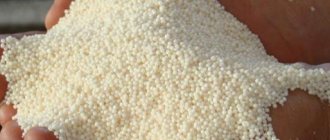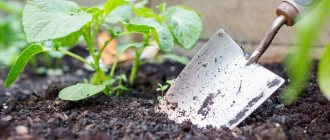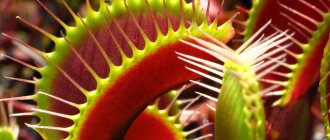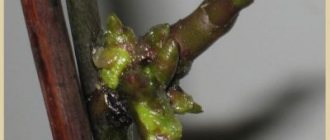Many gardeners purposefully grow only orchids. People want their room to feel like a fragrant garden at any time of the year. Beautiful and lush flowers of many types create the feeling of being somewhere in the tropics or exotic countries.
It should be understood that only a healthy plant will enjoy flowering, so it is necessary to pay due attention to proper care. As for watering, lighting and other nuances, this is the topic of another article, but this one will talk about how to prevent the appearance and development of non-orchid pests.
What it is?
Fitosporin is the latest drug of biological origin. Every gardener should know how to use it. After all, it was created to combat plant ailments, the source of which are fungi and bacteria. These pests most often attack:
- house plants;
- shrubs;
- fruit and vegetable crops.
This drug is used not only to combat parasites, but also to root cuttings. They are processed immediately before planting.
Reference. Fitosporin is distinguished by its speed of action. The effect becomes noticeable immediately after the first use.
Reasons to use
If the drug is used when crops are heavily damaged, it most often turns out to be ineffective. But by treating plants in the early stages of infection, you can rid them of scab, blackleg, root rot, late blight, seedling rot, seed mold, and wilting. The product is successfully used for treating seeds and other planting material. It is used to treat indoor plants during the flowering and growing season by spraying. If the fungicide is used correctly, it is possible to protect plants from pathogenic microflora. The product is effective for treating flowers not only for medicinal but also for preventive purposes.
What is it used for?
Phytosporin quickly spreads through the vascular system of plants. The basis of the drug is spores that release waste products. These products inhibit the development of fungal and bacterial diseases, and then completely destroy them. The product perfectly fights the following pests:
- powdery mildew;
- root rot;
- fusarium;
- bacteriosis
Fitosporin is an indispensable assistant for lovers of the Orchid genus, but the effect depends on many factors. Often the effectiveness ranges from 65% to 95%.
The drug described is one of the low-toxic ones, so the treatment can be carried out in residential premises - this does not threaten severe poisoning.
Indications for the use of phytosporin
Despite the fact that this is a herbal medicine, it is also not recommended to simply water flowers with it (at any time).
You can treat an orchid when the following points have been noticed:
- withering began;
- scab appeared;
- root rot is visible;
- there is a black leg;
- the seedlings rot;
- late blight has appeared.
It would not be a bad idea to treat planting material with phytosporin. Many gardeners recommend using the drug during the growing season and flowering.
Important! During severe damage, phytosporin is ineffective! Therefore, you should not wait in vain for the result if the flower is completely infected by parasites.
In this case, it is necessary to act completely differently, and measures must be taken immediately.
From time to time you can treat orchids with a herbal medicine, but you shouldn’t be too zealous, because excess is also not very good.
Release form
The drug is available in several forms.
- In the form of a liquid or aqueous suspension. Live cells and spores are contained in an amount of at least one billion per milliliter of the drug.
- In powder form. The products are sold in sachets weighing 10 and 30 grams. One teaspoon contains 3-3.5 grams of powdered preparation.
- Paste. Its weight is 200 grams. In turn, in one gram there are more than 100 million living cellular organisms.
Compound
Fitosporin is a fungicide of biological origin. This explains its composition, which contains nothing but living cells and spores of fungal bacteria.
These components allow the drug to survive the following unfavorable factors:
frost;- heat;
- drought;
- increased air humidity.
Under such conditions, the entire drug is converted into spores. There is another type of Fitosporin on sale, to which additional useful elements have been added.
Typically these additives are:
- potassium;
- phosphorus;
- nitrogen;
- chalk.
Important! The fact that Fitosporin is a biological drug does not mean that it should be used frequently without a specific need.
The secret to saving seeds
Sterility is one of the main conditions for the propagation of orchids in artificial conditions. Flower growers carefully disinfect all utensils, eliminating the possibility of contamination of planting material with microorganisms.
Soaking in a solution of Fitosporin has a beneficial effect:
- on disease resistance;
- seed germination rate;
- growth and development of orchids.
How to soak?
To soak planting material, follow simple instructions:
- Fitosporin is diluted in the dosage recommended for soaking seeds;
- immerse the seeds in a container with a solution;
- They are taken out after 2 hours and sent for germination.
Can it be treated with dry compound?
Yes, you can treat it with a dry compound, but it will be an absolutely useless procedure. Bacillus hay shows its activity only after soaking, and dry spores will simply lie and wait for favorable conditions to arise.
In what cases is it used?
Flower growers use herbal remedies to solve the following problems with plants:
- the beginning of withering;
- development of fungal and bacterial diseases;
- manifestation of root rot;
- the appearance of a black leg;
- the beginning of the development of late blight.
Gardeners also often use this drug to treat planting material. Phytosporin is especially necessary for orchids during their flowering and reproduction (how and what else can you feed a flower during flowering?).
In the case where the orchid was practically destroyed by pests, the herbal remedy will not have a restorative effect. In this case, stronger drugs with a more chemically active composition will be required.
Compatibility with other tools
You may be interested in: How to care for orchids in a pot after purchase Why the leaves of an orchid wither and how to save it Features of the care and propagation of the Dendrobium Nobile orchid
Fitosporin is allowed to be used in combination with drugs for other purposes. Its use in combination with the herbicide Triallat, the insecticidal agent Decis, and the fungicidal preparations Vitivax 200 and Fundazol gives a positive result.
The effect of such complex treatment is confirmed by laboratory tests. This is also evidenced by reviews from flower growers. Fitosporin interacts well with growth stimulating drugs. The only limitation is the use of Fitosporin in conjunction with products containing alkali.
Safety precautions
Fitosporin has been assigned the fourth class of danger for humans and the third for bees. If the safety precautions specified in the instructions are not followed, there is a risk of irritation of the mucous membrane. It is worth noting that this product does not have phytotoxicity.
Rubber gloves should be worn when working with this drug. It would also be a good idea to wear a protective apron. Smoking, eating and drinking are prohibited during work.
If Fitosporin gets on the skin or mucous membranes, you should immediately rinse the affected area under running water. In case of accidental ingestion, drink a large amount of purified water (at least 3-4 glasses), take activated charcoal and induce vomiting.
Step-by-step instruction
Processable:
- seeds;
- cuttings;
- soil before sowing or planting.
Reference. The prepared solution is sprayed on fruit-bearing plants and orchids during the growing season.
Dosage
The required amount of the drug depends on the following factors:
- processing method;
- type of plant being processed;
- purposes of use.
- To spray phalaenopsis, you need to take ten drops of Fitosporin and add them to a mixture of Fitosporin paste and water (mixture proportions - 1:1).
- To water the orchid, you need to prepare a different solution. To do this, dissolve 15 drops of herbal medicine in 1 liter of clean water.
To soak plant cuttings, you need to stir 4 drops of paste in 0.2 liters of water.- There is a bottled preparation. To prevent diseases, use 4 drops per 0.2 liters of water. And for the treatment of detected ailments, 10 drops per the same amount of water.
Experienced gardeners strongly do not recommend using Fitosporin “by eye”. Before using it, you need to carefully study the information on how to properly dilute the paste and other types of preparation for processing and how long to keep orchid cuttings in the solution.
How to dilute the powder?
This process may vary. It all depends on the goal pursued by the grower.
On a note. The prepared solution can be used two hours after preparation.
- Sowing of planting material. The most suitable dosage is 1.5 grams per 0.1 liter of water. The seeds are left in the solution for 2 hours.
- Prevention of root rot during replanting. Dissolve 10 grams in 5 liters of water. Soak the root system in the resulting solution for 120 minutes.
- Prevention of other fungal and bacterial diseases. 1.5 grams of Fitosporin are dissolved in 2 liters of water. The orchid is sprayed with the prepared product.
- Treatment. 1.5 grams of the drug are poured into 1 liter of water. Then water the plant with diluted water.
How to treat a plant?
- If pests are detected, dilute 1.5 grams of the product in one liter of water. And then they water the orchid with it. But not in a simple way, but by immersion.
- Place the infected plant in Fitosporin for 30 minutes.
- After the specified time has passed, the plant is taken out of the solution, the water is allowed to drain, and the pot with the flower is returned to its permanent place of “residence.”
- During processing, the pot loses its transparency, but after several showers or wiping it will return to its former appearance.
- The treatment process should be repeated at least 10-15 days later. The exact time is determined after the soil has completely dried. The procedure is completed after making sure that the pests have died and nothing else threatens the orchid.
- It is not recommended to immerse a flowerpot with phalaenopsis in Fitosporin for more than half an hour.
- You can spray a little more often - about once a week.
Description of the drug
Fitosporin is a microbiological preparation for combating bacterial diseases on plants of any crop: from tomatoes and apple trees to tropical indoor plants.
The basis of the drug is Bacillus subtilis, which is an antagonist against phytopathogens and begins to act immediately after processing the plant. It produces fungicidal oligopeptides that suppress the proliferation of plant pathogens.
Release forms
- Powder (concentration of more than 2 billion spores and living cells/g) in sachets weighing 10 and 30 g;
- Paste (concentration of more than 100 million spores and living cells/g), 200 g in a bag;
- Liquid (concentration of more than 1 billion spores and living cells/g), in a 110 ml bottle.
Indications for use
Fitosporin is effective against a wide range of fungal and bacterial plant diseases, including: powdery mildew, bacterial spot, bacterial cancer, fusarium (white, gray, black, dry, etc.) rot, septoria, leaf rust, root rot, late blight and many others diseases.
However, phytosporin is not a universal remedy for all diseases. Depending on the type of plant and the degree of disease damage, its effectiveness varies from 65 to 95%.
Advantages and disadvantages
The main advantage is that the drug can be used at any temperature: from -50 to +40° C, as well as at all stages of plant development: from seeds to mature trees.
Under unfavorable conditions, the bacterium, which is the basis of the drug, turns into a spore state, and its vital activity is suspended. When conditions return to normal, the bacterium becomes active.
The disadvantage is that the bacterium dies in bright sunlight and an alkaline environment. Therefore, treatment with phytosporin should be carried out in cloudy weather or early in the morning or evening.
Methods of using the drug
- Soil treatment. Spill the substrate with a solution of phytosporin or soak it in a basin.
- Soaking seeds. Orchid seeds require sterile conditions to germinate. Even if all working utensils are disinfected, infection can get in with the seeds. To prevent this from happening, the seeds can be soaked in a solution of phytosporin.
- Soaking the roots. You can soak orchid roots in phytosporin during transplantation for prevention or when partial or complete resuscitation of the plant is carried out. In this case, living roots are washed, dead areas are cut off with a disinfected tool and soaked in a container with a phytosporin solution. After the procedure, the sections are sprinkled with crushed coal or cinnamon and dried.
- Is it possible to water an orchid with the drug? It makes sense to shed if the orchid grows in a fairly heavy, moisture-intensive substrate. In other cases, if the substrate is very light, it is more useful to soak the pot with the plant in a bowl of solution. This method is usually used to prevent disease.
- Leaf processing. Spraying with a fine spray bottle is also an effective way to treat the plant. Most often, this method is used in combination with others above. In this case, it is highly desirable to use liquid phytosporin as a mother solution.
This is interesting: Purple orchid - a brief overview of phalaenopis varieties
Possible errors and their elimination
The instructions indicate that the drug described cannot harm the plant. Even with a significant excess of the dose or concentration, no serious negative consequences are observed. However, it is worth noting that Fitosporin, which contains various useful elements, is not used to treat infected orchids. Such products are more suitable for preventing pest attacks, as well as maintaining the health of phalaenopsis.
Important! You should not carry out the next treatment if the soil has not yet completely dried out after the previous treatment.
Storage conditions
The shelf life of the drug is 4 years. It must be placed in a cool, dry place so that children do not have access to the product. And also make sure that Fitosporin does not come into contact with food products.
Alternative
A product similar in composition and functions, which can become a replacement for Fitosporin, is Trichodermin. It is most often used for:
- pest control (rot, late blight, fusarium, powdery mildew);
- stimulating growth;
- improving the body's protective functions.
However, Trichodermin does not contain live bacteria, so this drug cannot be considered a complete analogue of Fitosporin.
Methods of application for orchids
The drug is used to rid plants of parasites, treat most plant diseases, and for preventive purposes. The effectiveness of the substance directly depends on the severity of the disease and the time that has passed since infection. In case of a serious and advanced disease, good results cannot be achieved without potent drugs containing chemicals. But even in this case, Fitosporin is useful and speeds up the rehabilitation process
It has a positive effect on the plant’s immunity, which is very important after suffering a serious illness.
When using Fitosporin M for orchids, the following unpleasant problems can be solved:
- scab;
- root rotting;
- withering;
- late blight
Experienced indoor plant lovers use Fitosporin before and during planting or replanting. It is also indispensable during the flowering period. But if the orchid has been severely damaged by diseases or pests, then this drug will not help. Here chemicals will come to the rescue, and Fitosporin is used as an additional drug to the chemicals; it will help the plant recover faster.
It is impossible to harm the orchid with Fitosporin. Even if you exceed all permissible standards in processing orchids, nothing bad will happen to the flower.
Attention! To dissolve Fitosporin, you need to use only rain or boiled water. In chlorinated tap water, all beneficial microorganisms will die. To activate bacteria, leave the drug solution for several hours after dissolving in water
Some advise treating the plant or the soil underneath with a powdered form of the substance, but this is useless. Bacteria, which are the main active ingredient in the drug, are activated only after dissolution in water. To make life easier for lovers of indoor plants, Fitosporin was invented in an already diluted, liquid form. After purchase, such a drug can be used immediately, without wasting time creating a solution
To activate the bacteria, the drug solution should be left for several hours after dissolving in water. Some advise treating the plant or the soil underneath with a powdered form of the substance, but this is useless. Bacteria, which are the main active ingredient in the drug, are activated only after dissolution in water. To make life easier for lovers of indoor plants, Fitosporin was invented in an already diluted, liquid form. After purchase, such a drug can be used immediately, without wasting time creating a solution.
The main component of Fitosporin is Bacillus subtilis, which is quite common in wildlife. These bacteria have often been used in scientific research. More recently, Bacillus subtilis was considered almost poisonous to the human body. But scientists have conducted hundreds of experiments and proven that these bacteria are even beneficial for all living things, including humans:
- They prevent the proliferation of most known types of microbes and fungi.
- This culture is used both in agriculture and in veterinary medicine and even in the food industry.
The paste form of Fitosporin needs to be thoroughly dissolved and in order for the bacteria to be fully activated, this solution must be allowed to stand for several days. And before use, dilute the concentrate again. Using paste is considered a more economical method than diluting powder. The diluted paste can be stored for six months, but should not be kept longer.
It is advisable to treat the plant with this preparation in cloudy weather or in the evening, since in the rain the substance can be washed off, and in bright sunlight the beneficial bacteria die. The best time for this procedure is the first few hours after rain, in the early morning hours or after sunset.
You may be interested in: How to save an orchid if its roots have rotted: tips, instructions An orchid can get sick and die as a result. Timely resuscitation measures will help return the plant to...Read more...
Phytosporin for orchids - secrets of salvation:
- For spraying, use the drug once every two weeks, provided there is no rain. And in case of high humidity, once a week.
- Plants that grow in the house should be watered at the root with a diluted solution once a month.
- Flower crops, including orchids, can be treated by briefly soaking them and giving them a small bath.
- For preventive purposes, use Fitosporin twice a year in spring and autumn.
- The drug can also be used as an assistant in plant restoration during treatment with chemicals.
Useful video
From the video you will learn how to use Fitosporin for orchids. Properties, dosage, solution preparation:
Unlike other flowers, orchids require special care, processing and feeding. Therefore, it is very important to know which means are suitable for this. Read about such drugs as Fitoverm, Aktara, Epin, Bona Forte, succinic acid, Zircon, Cytokinin paste, Agricola and B vitamins.
Reviews
Elena, 50 years old
For my orchids, I use Fitosporin only as a means of prevention. After spraying, this drug protects plants from any infections. Therefore, it replaces many medications. When measures are taken immediately, treatment occurs very quickly.
Irina, 44 years old
My flowers feel great after Fitosporin. They are actively developing, blooming well and do not get sick. This wonderful product has become a staple in my medicine cabinet for indoor plants. It is most convenient to use Fitosporin in liquid form. It is easier to dilute it without calculating the proportions in detail.
